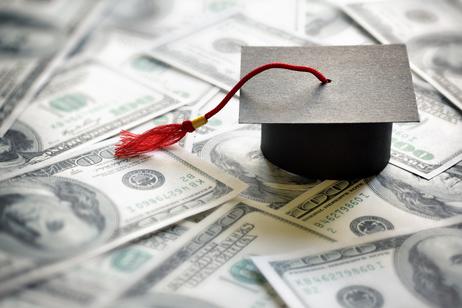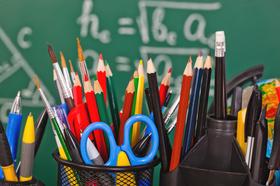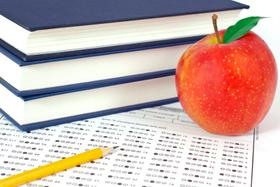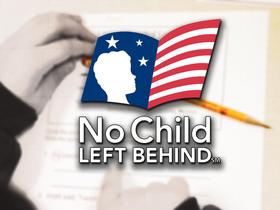When you think of how your child’s education is going to cost, you probably think of the expenses you cover yourself. From school books and uniforms to daily lunches, transportation to and from school, and extra educational materials at home, the costs add up quickly. But what about the costs you don’t cover? Things like teacher salaries, school maintenance and repairs, taxes, and more – someone has to pay these costs, but who?
If your child attends public school, it is likely that the majority of the cost of his education will be shouldered by the government (federal and state as well as local). One might argue that your taxes pay for a portion of those costs, but it is nowhere near the thousands of dollars it actually takes to send your child to public school for a year.
Depending on where you live and the quality of the local education system, you may be wondering just where all of that money goes. In this article, we’ll discuss the average annual cost to educate a student in different states as well as some of the ways your tax dollars are spent.
This video from The Cato Institute examines the cost of public K-12 education.
Annual Costs for Public Education by State
Spending varies drastically for public education from one part of the country to another. The biggest spender is New York, shelling out over $20,000 per student per year. This includes teacher salaries as well as support services and other educational costs. On the other end of the spectrum, states like Utah and Idaho spend a fraction of that amount – about a third as much, to put a price tag on it.
According to 2017 statistics, the three states with the highest state and local spending for education were New York at $86.1 billion, Texas at $87.2 billion, and California at a whopping $130.5 billion. States with the lowest populations (under 2.8 million) like Idaho, Montana, Wyoming, North Dakota, and South Dakota also have some of the lowest spending – between $2.5 and $3.5 billion. Midwestern states like Nebraska, Kansas, Oklahoma, and Iowa range between $7.4 and $11.7 billion while Northeastern states like Pennsylvania, Ohio, and New Jersey are in the mid-30s to low-40s.[1]
So, now that you have an idea of how much it costs to educate a child each year in different states, you may be wondering why those costs are so variable and how much your tax dollars actually contribute. We’ll go into the details of taxes in the next section but, for now, let’s take a closer look at the factors that explain the significant variation in education costs by state.[2] Here are a few:
- Teacher Salaries – This is one of the biggest determining factors for education spending because wage and salary expenses vary so greatly across states. The cost of living has an impact on teacher salaries and the influence of teachers’ unions can drive those costs even higher. Districts that employ more experienced teachers and teachers with advanced degrees also spend more on salaries.
- Revenue – Public schools can only spend as much money as they make, so revenue is a major determining factor for public education spending. Schools will spend as much money as they make but that income is limited by local property tax and other forms of public funding.
- Employee Benefits – The national average cost for employee benefits for teachers is about $1,700 per student, though some states range as high as $4,600 (New York). Teacher pensions, tuition reimbursement, health insurance, and other benefits account for a significant portion of public school spending each year.
- Class Size – Though it is not as big a factor as teacher salaries and benefits, class sizes do have an impact on school district spending. Class sizes are highest in Utah at an average of 28 students while states like Wyoming, Tennessee, Vermont, and Maine average 18 students per class.
- Cost of Living – It should go without saying that states with the highest cost of living will also have the highest educational expenses. While many will agree that teachers are grossly underpaid, they still need to make a living so salaries will be higher in states where the cost of living is higher. These costs are the highest in Hawaii, New York, and the District of Columbia.
- Administrative Costs – Though administrative costs account for only about 7% of total national spending on public education, there is a great deal of variation from one state to another. States, where school districts are more fragmented, have higher expenditures for administrative costs, up to $1,000 per student (ex: District of Columbia).
In addition to these factors, state and local legislation can impact how much revenue local public education systems receive and can therefore spend on students. Mandates for special education can significantly impact a school’s budget and budgetary cuts are an unfortunate reality. Even as lawmakers make cuts to state school funding, you still have to pay your taxes. Where does that money actually go? Keep reading to find out.
This TedTalk examines the issue of public school funding.
Where Exactly Do Your Tax Dollars Go?
According to Data First, the average school district receives about 44% of its funding from the local government, 47% from the state government, and about 9% from the federal government[3]. The actual percentages vary from one state to another but, generally speaking, these funds are spent in the following areas: instruction, operation, administration, and student services. A significant portion of this funding comes from property taxes.
If you own a home or a commercial property, you’ll be required to pay property taxes. Though it varies from state to state, most or all of that money remains within the community, but not all of it goes toward local schools. Property tax revenue helps fund everything from road construction and maintenance to local government staff salaries and municipal employees (such as police, firefighters, and public works employees). They also help pay for organized recreation, maintenance of public land, public transportation, and street lights and traffic lights.[4]
While a majority of local funding for public education comes from property taxes, at the state level it largely comes from sales and income taxes. As you can imagine, it is this system that partially accounts for the major differences between states when it comes to available revenue for public education. To make matters more complicated, changes in school reform have led to higher expectations in the nation’s schools but not necessarily an increase in funding. For example, the No Child Left Behind Act of 2005 enforced higher standards with the goal of improving individual outcomes in public education.[5]
One of the tenets of the No Child Left Behind Act was that states develop assessments in basic skills and, in order to receive federal funding, states had to administer these tests and prove that students could meet a certain standard. Though individual states were allowed to set their own standards (as opposed to a national achievement standard), standardized testing became the focus for many public-school systems because a significant portion of their funding became dependent on student performance.
While there are certainly supporters of the No Child Left Behind Act and its successor, the Common Core State Standards Initiative of 2009, there are also many who oppose it. Among the detractors, it is a common opinion that, in order to meet higher educational standards, schools need more money. On the other hand, some say that higher educational spending doesn’t always correlate with higher student performance.[6] If you refer back to the state spending averages, you’ll see the validity of this argument. State spending on public education is determined by a number of factors completely separate from student performance.
If increased spending on public education doesn’t necessarily improve student performance, what would? How much would it cost to improve student performance? Before addressing this question, let’s take a look at how well the nation’s public-school students are performing.
How Are the Nation’s Public-School Students Performing?
It is unfortunate but true that many school districts in the United States are failing to reach even the lowest standards for education. According to a 2015 report by The Nation’s Report Card, the nation’s average NAEP score for reading was 221.
The National Assessment of Educational Progress (NAEP) is the biggest nationally representative assessment of student performance in subject areas such as mathematics, science, reading, writing, civics, geography, economics, the arts, and U.S. history. NAEP assessments are uniformly administered across the nation, so the results provide a common metric for all states as well as certain urban school districts (such as the District of Columbia). The assessment changes very little from year to year, so it provides not only an annual picture of student performance but a view of student academic progress over time as well.[7]
Taking a closer look at that 2015 report, which states performed at or above the national average and which states underperformed?
Statistically speaking, 22 states or jurisdictions had a score higher than the nation’s average (as high as 235) and 16 reported a score not significantly different from the nation’s average (a range of 218 to 224). A total of 14 states or jurisdictions reported scores lower than the national average (as low as 207). Among the high-performing states and jurisdictions were Massachusetts, the Department of Defense Education Activity (DoDEA), New Hampshire, and Vermont. States including Colorado, Iowa, Maryland, New York, Tennessee, and Texas scored close to the national average. Among the lower scores were states and jurisdictions including Alaska, California, Hawaii, Nevada, New Mexico, and the District of Columbia.[8]
The NAEP provides a separate score for mathematics. According to a 2015 report, the nation’s average score for 4th-grade students in mathematics was 240 – it was 282 for 8th-grade students. These scores are based on separate 0 – 500-point scales. Not only did scores fail to increase for any student group in 2015 compared to 2013, but the nation’s average score was 1 point lower for grade 4 and 2 points lower for grade 8. To put it another way, 2015 NAEP scores placed 40% of grade 4 students at or above the “proficient” level and just 33% of grade 8 students at or above that level.
Divided by demographics, Asian students had the highest scores, followed by white students, Native Hawaiian/Pacific Islander students, Hispanic students, American Indian/Alaska Native students, and black students. Students who identified with two or more races scored lower than Asian students but higher than Native Hawaiian/Pacific Islander students. Male students in both grades performed slightly higher than female students and students from suburbs ranked higher than rural students – town students ranked lowest.[9]
With these statistics in mind, let’s take a look at the potential cost to improve performance in some of these underperforming demographics.
What Are the Costs of Better Education?
While there are countless cost analyses out there that show the inequities in funding for low-income school districts, no one has ever documented the connection between how much a school spends and student performance – until now.
A team of five researchers from Rutgers University (in collaboration with the Education Law Center) has recently created a complicated model to predict just how much it would cost every school district in the nation to bring student performance levels in math and reading up to the national average. Thinking back to the previous section and the staggering number of school districts that fail to reach even the “proficient” level, this seems like an under-ambitious goal. Unfortunately, that is the state of the nation’s public education system.
So, how much would it cost to improve performance in those under-performing districts to bring the majority of students up to the national average?
In the past, various papers have documented the positive effects of increased funding on low-income student performance, but it was difficult to compare these achievements from one part of the country to another. Thanks to complex calculations performed by the Stanford Education Data Archive, however, there is now a dataset available mapping every state test on a solitary national yardstick[10]. This is what the researchers at Rutgers used to develop their model.
According to this team of researchers, it would cost between $5,000 and $30,000 per student per year to achieve test scores equivalent to or higher than the nation’s average. There are two primary factors that determine the exact cost: the district’s location and the mix of student demographics. Again, schools that are located in parts of the country where salaries are higher will bear higher costs. The population density was a factor as well – the cost to educate low-income students escalates more quickly in urban than in suburban areas. If you think about it, it makes sense. The lower the student’s income, the higher the school’s costs to make up the difference in terms of educational resources.
To provide a snapshot of this, consider that a school district where 40% of the students identify as low-income would need to spend between $20,000 and $30,000 per student in order to achieve average test scores. In contrast, a school district where 10% of students or fewer were low-income would only need to spend between $5,000 and $10,000 per student per year. Remember, these costs are only to bring the majority of students up to the nation’s average level of performance. The costs to bring students up to the minimum state standard for their grade level or to achieve a level higher than “proficient,” would be much higher – astronomical, even.[11]
This model paints a picture of a broken education system, but the researchers would remind readers that it is still a very early version of the model and it could quite possibly be overstating the cost to bring low-income districts up to the national average. Similar studies performed in the past have shown that doubling the district’s cost per student was generally sufficient to even the playing field between low-income and high-income students, at least according to performance outcomes. If you make some statistical comparisons, you might find that the numbers match up for many states.
What’s the Final Word?
The fact of the matter is that averages are just averages and numbers can only say so much. Every student in every school district is unique, so it is difficult to say whether an increase in public-school funding will actually correlate with an improvement in performance. One thing is for certain, however - more funding for public schools can only help the situation.
Questions? Contact us on Facebook. @publicschoolreview
[1] “State Education Spending Rank.” U.S. Government Spending.
[2] Maciag, Mike. “The States that Spend the Most (and the Least) on Education.” Governing.
[3] Hull, Jim. “How Are Schools Spending My Tax Dollars?” Data First.
[4] Where Do My Property Tax Dollars Go?” Free Advice Legal.
[5] Klein, Alyson. “No Child Left Behind: An Overview.” Education Week.
[6] “How Do We Fund Our Schools?” PBS.org.
[7] “NAEP Overview.” National Assessment of Educational Progress.
[8] “2015 Reading National Results Overview.” The Nation’s Report Card.
[9] “2015 Mathematics National Results Overview.” The Nation’s Report Card.
[10] Stanford Education Data Archive.” Stanford Center for Education Policy Analysis.
[11] “What Would It Cost to Get All Students to Average?” U.S. News.













